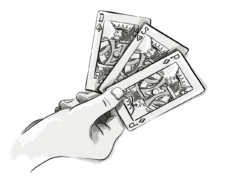When was the last time you bought a newspaper? If you are like most people, it’s probably been a while.
But when was the last time you read the news on your computer, tablet, or smartphone? Pretty recently, we’ll bet.
Newspapers, as with many other business and industries, have made the move to the Internet, and just like most sources of information in this space, their content is often free to view and consume.
From a consumer standpoint, this is a very positive change, as important news is readily available at no charge and very easy to access. For publishers, however, this means income once earned from newspaper purchases has dramatically decreased.
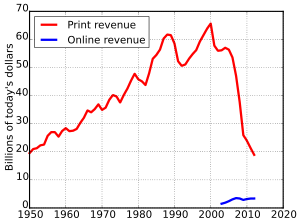
Source: Trends and Number, Newspaper Association of America. Image: Wikipedia.
In order to claw back some of the lost profit, news sites have started introducing a paywall system whereby a visitor can view a limited amount of news articles before they are asked to take out a subscription.
But in a world where everyone expects information on the Internet to be free, getting visitors to pay for this service is no easy feat. In fact, the average subscription rate for a paywall on a news site is about 0.5%.
So how can content-based sites and news companies earn enough revenue to pay bills and hand out salaries? Through online advertising, of course.
Online Advertising For Publishers
The main way for a publisher to make money with its online content is through digital advertising. This business model extends from news and blog sites to social networks.
Traditionally, online advertisements consist of a range of banner ads, square ads, and vertical ads (skyscrapers).
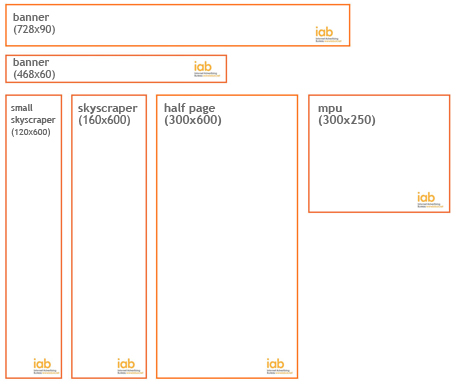
However, over the years, consumers have become more aware of these types of ads, leading to a massive decrease in user engagement. In fact, the average click-through rate (CTR) is a measly 0.06%. This equates to less than one click per 1000 impressions, and that includes bots and accidental clicks (where a user unintentionally clicks on the ad).
For publishers, the problem is that as the effectiveness of banner ads falls, so, too, does the cost per mille (CPM), resulting in fewer revenue opportunities.
One of the main causes of such low CTR is a phenomenon known as Banner Blindness, which states website visitors consciously or subconsciously ignore banner-like information. This theory is backed up by a number of usability and view tests:

So if traditional online advertising is failing to get visitors to click on ads, what hope is there for publishers to make money through advertising?
The answer lies in a newer form of online advertising, known as Native Advertising.
What is Native Advertising?
Native advertising is a form of online-media advertising where an ad is made to match the look and feel of the rest of the content on a website. It is designed to blend in with the rest of the site’s content so it follows the natural form of the user experience.
Ads should match both the form and function of the website:
Form: Matches the visual design of the website and looks like natural content.
Function: Behaves in the same way as the website’s user experience and functions just like natural content.
In short, a native ad is not supposed to look like an ad. So now, instead of seeing a traditional banner ad like this,

users will see a native ads located in between organic content:
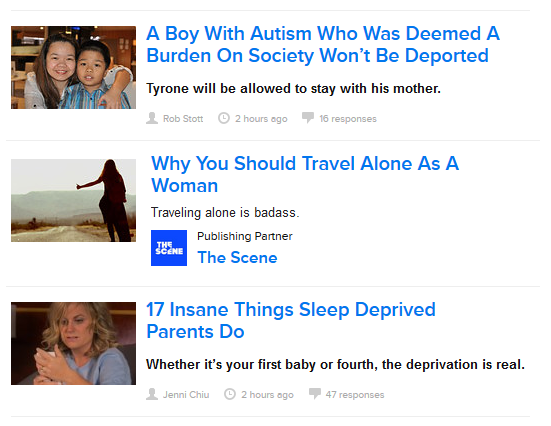
What are the Main Native Ad Formats?
Native ads are generally found on content-rich sites, such as news sites, blogs, and social media networks.
Here are the main six native-ad formats (provided by IAB):
In-feed/social: These native ads appear on social media sites. Facebook, Twitter, LinkedIn, and more recently, Pinterest, are all displaying native ads to their users.

Paid search: The very first time a native ad appeared on the Internet was when Google launched AdWords and started displaying ads at the top of organic search results. Previous to that, adverts appeared on the right-hand side of Google search queries, which made them easy to recognize as ads.

The paid ads at the top of the search results look and feel like part of the search query.
Recommended content (aka recommendation widgets): This form of native advertising is probably the most subtle. You may have glanced over this type before and presumed that it is actually content from the website you’re reading. However, the telltale sign is the message above the ads, usually written as From the web, or Recommended for you.

As this type of native advertising appears on content-rich sites, the chances of a user clicking on them is considerably higher.
Another form of recommended content is paid inclusion (sponsored content/advertorial). This form of native advertising involves companies paying to show their content on a website, like a news site or blog, and is displayed just like the other forms of content on the site.

The article at the bottom is an example of sponsored content. When the visitor clicks on the article, they are usually presented with the content and displayed an ad asking them to take some sort of action, such as visit the advertiser’s site or even purchase a product.
Promoted listing: Examples of promoted listings can be found on e-commerce sites like Amazon. They work in a similar way to paid search, where an advertiser pays to have its products listed next to similar products.

In-ad with native elements: This type of ad is displayed just like a normal ad, but the content within it is contextually relevant to the rest of the website.

Custom: While the examples above have specific characteristics, custom native advertising doesn’t. Therefore, a custom native ad is an ad that doesn’t fit into one of the categories above, but is still considered a native ad due to its behavior. Custom ads are usually the result of a joint effort between the publisher and advertiser.

One of the more recent areas to see the introduction of native ads is Google’s Gmail service.
Is Native Advertising Effective?
Yep, you bet it is.
Compared to traditional banner ads, native advertising delivers better campaign ROIs and is more effective at engaging with users. The numbers speak for themselves:
- In-feed native ads are 25% more effective in capturing a user’s attention than traditional banner ads.
- Native ads are looked at by users 52% more frequently than banner ads.
- Purchase intent increases 18% with native ads than with traditional banner ads.
- Consumers actually looked at native ads more than original editorial content – Native, 26% vs. original editorial content, 24%.
Statistics provided by sharethrough.com
The effectiveness of native advertising can be largely attributed to their sole purpose – i.e. to blend in with the rest of the content – which can have a big impact on the way a user views and interacts with the ads. An infographic from Sharethrough and Column Five clearly explains the science behind why native ads are so effective.
Click here to view the infographic.
Due to the increased effectiveness of native advertising, many publishers are setting a minimum spend on this type of campaign for brands:
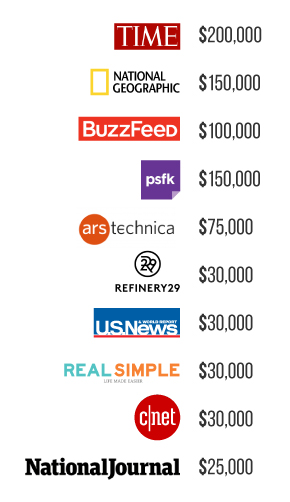
The Controversy Surrounding Native Advertising
While native advertising enables advertisers to engage with their target audience in a more effective way, it certainly isn’t without its fair share controversy.
On a shallow level, many feel that consumers are being tricked into thinking the content they are viewing is part of the site’s organic content. By disguising ads as regular content, users often can’t tell the difference between regular blog posts and news stories and native advertising. This, of course, depends on the medium and the advertiser’s creativeness, but the fact that native ads are designed to match the look and feel of a site, it is only natural for some users to confuse the two.
On a deeper level, native advertising is breaking the separation of church and state, which, in the media world, refers to the separation of editorial content and business operations (typically advertising), and means that a news company should provide independent reporting free of paid influence.
One of the most well-known examples of this is from the American magazine, The Atlantic. In January 2014, The Atlantic published a sponsored article praising Scientology’s leader, David Miscavige.

As you can imagine, this caused a whirl of controversy and essentially gave rise to the whole church-state separation debate.
The Atlantic, just like many other major content sites, still incorporates native advertising on its website and has even created a separate team within the organization to handle native advertisements, thus fueling the controversy even more.
The Future of Native Advertising
Whether you agree with native advertising or not, the fact remains – it is here to stay. Why? Because websites, apps, and social networks that have already rolled out their native advertising campaigns are seeing a real increase in advertising revenue. And while the move to native advertising is proving fruitful for many news and content sites, its real potential lies in other untapped industries, such as gaming and virtual reality, and the real test there will be to see how advertisers are able to “disguise” their ads in these uncharted mediums.

